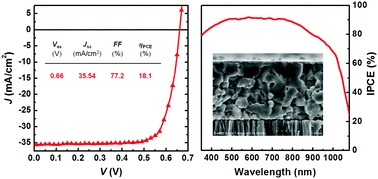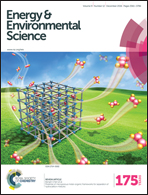High efficiency solution-processed thin-film Cu(In,Ga)(Se,S)2 solar cells†
Abstract
The polycrystalline chalcopyrite Cu(In,Ga)(Se,S)2 (CIGS) solar cell has been considered one of the most promising alternatives to conventional silicon solar cells, due to its achieving the highest power conversion efficiency (PCE) among all the thin-film photovoltaic technologies, potentially lowered production cost and compatibility with large area flexible substrates. Unfortunately, almost all the high efficiency CIGS devices are presently fabricated via vacuum-based techniques, which still require expensive facilities and high power consumption, thus leaving the fabrication cost issue unresolved. Herein, a hydrazine-based, solution processed CIGS device with high performance has been demonstrated through the construction of a composition grading profile of the CIGS absorber layer, which enhances the charge collection efficiency and maximizes the solar spectrum absorption. ZnO nanoparticles (ZnO NP), as the window layer, are proven to be an ideal alternative to sputtered ZnO, benefiting from high optical transparency, smooth and defectless interface, adjacent to the CIGS absorber layer. The CIGS solar cell with a certified PCE of 17.3% is achieved, which is the world record efficiency for solution-based CIGS solar cells, and also shortens the efficiency gap towards vacuum-based devices.


 Please wait while we load your content...
Please wait while we load your content...